You’ll need a professional 360 camera with 4K+ resolution, powerful processing hardware, and streaming software like OBS Studio for successful VR live streaming. Essential equipment includes omnidirectional microphones for immersive audio, a high-performance computer with robust GPU/CPU, and a stable wired internet connection with minimum 25 Mbps bandwidth. Configure RTMP/RTSP protocols, optimize stitching settings, and test your complete setup thoroughly before broadcasting. Master these technical fundamentals and you’ll discover advanced techniques that transform ordinary streams into enchanting immersive experiences.
Understanding 360 VR Live Streaming Technology
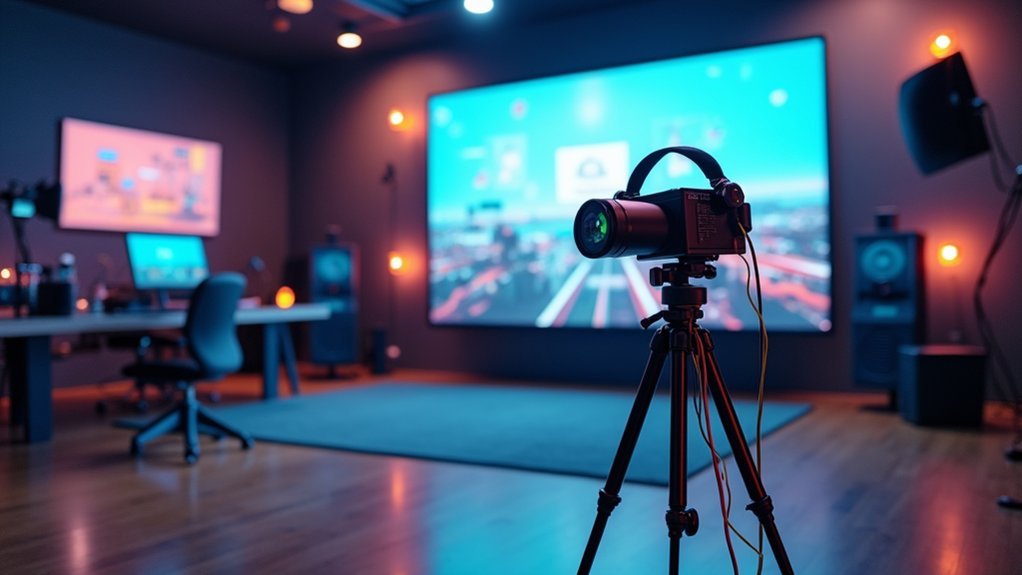
Although traditional video streaming captures a fixed view, 360 VR live streaming transforms how you experience content by utilizing specialized cameras that record in all directions simultaneously.
360 VR live streaming revolutionizes content consumption through specialized cameras that simultaneously capture immersive, all-directional footage unlike traditional fixed-view broadcasting.
This streaming technology creates an immersive experience where you can look around and interact with your environment in real time.
You’ll need cameras capable of capturing high-resolution footage, typically 4K or higher, to maintain visual clarity.
The system requires advanced software solutions that stitch multiple camera feeds together seamlessly, creating that complete 360-degree view.
Low latency becomes critical – you’ll want around 100 milliseconds or less to guarantee smooth viewer interaction.
Additionally, omnidirectional microphones capture surround sound audio, complementing the visual immersion and delivering a truly thorough sensory experience for your audience.
Essential Equipment for 360 VR Broadcasting
Now that you understand the technology behind 360 VR live streaming, you’ll need to invest in the right hardware to bring your vision to life.
Essential equipment starts with a professional 360 VR camera like the Insta360 Titan, capturing immersive 8K video at 30fps. You’ll require high-performance computers with robust processing power to handle VR streaming demands smoothly.
Your setup isn’t complete without streaming software like OBS Studio for customizing scenes and integrating video sources. A quality microphone, whether USB or XLR, guarantees crystal-clear audio that keeps viewers engaged throughout your broadcast.
- Professional 360 VR camera capturing 8K resolution at 30fps for immersive viewer experiences
- High-performance computer with powerful GPU/CPU providing sufficient processing power for smooth VR streaming
- Quality microphone delivering clear audio to maintain audience engagement during live broadcasts
Choosing the Right 360 Camera for Live Streaming
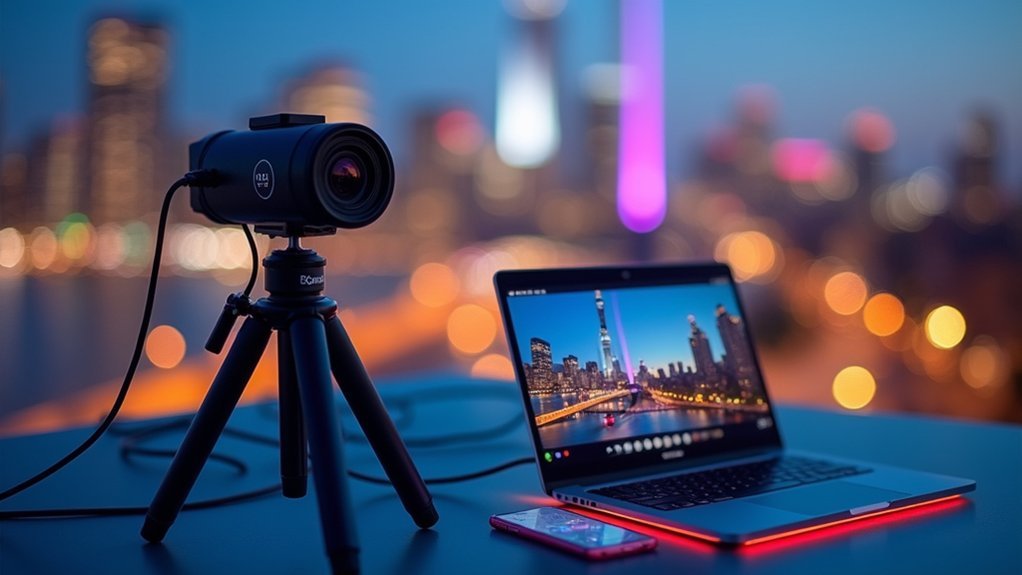
Which 360 camera will deliver the professional-quality streams your audience expects?
You’ll need a 360 camera supporting minimum 4K video resolution, though options like the Insta360 Titan offer 8K at 30fps for superior clarity.
Confirm your chosen camera supports live streaming protocols including RTMP, RTSP, or HLS for seamless compatibility with major streaming platforms like YouTube and Facebook.
Processing power matters greatly—stronger capabilities reduce latency and improve performance.
The Insta360 One X2 delivers 5.7K resolution at 30fps with excellent processing.
The Insta360 One X2 stands out with its impressive 5.7K resolution capability and robust processing power for professional streaming.
Consider software compatibility carefully; cameras with built-in streaming software simplify setup, while third-party software support like OBS Studio provides greater customization.
Don’t overlook in-camera stitching features, which streamline your live streaming workflow by eliminating post-processing requirements.
Hardware and Software Requirements
You’ll need more than just a 360 camera to create professional VR live streams that captivate your audience.
Your hardware setup requires a high-quality VR headset like the Pimax Crystal Light with at least 17 million pixels, plus a powerful computer with robust GPU and CPU capabilities to handle demanding VR applications.
The right streaming software, particularly OBS Studio, becomes your control center for managing multiple platforms and customizing your broadcast settings.
Essential Camera Equipment
When setting up a professional 360 VR live streaming operation, your camera selection forms the foundation of your entire production quality.
You’ll need essential camera equipment that can handle the demanding requirements of immersive content creation.
Professional 360 cameras like the Insta360 Titan or Insta360 Pro deliver the high-resolution capabilities necessary for quality VR live streams.
These cameras support up to 8K resolution, guaranteeing your viewers experience crisp, detailed footage that maintains immersion.
Key camera considerations for VR streaming include:
- Resolution capability – Choose cameras supporting 4K minimum, with 8K preferred for premium quality
- Streaming protocol compatibility – Guarantee RTMP, RTSP, or HLS support for platform integration
- Real-time processing – Select models that work seamlessly with streaming software like OBS Studio
Your camera choice directly impacts viewer engagement and content quality in the competitive VR streaming landscape.
Streaming Software Setup
Having selected your professional 360 camera, the next step requires assembling a powerful computer system and configuring streaming software to handle VR content processing. You’ll need OBS Studio as your primary streaming software to manage scene composition and integrate multiple camera sources effectively. Your setup demands a robust GPU and CPU combination to process VR content without lag.
| Component | Requirement | Impact |
|---|---|---|
| Streaming Software | OBS Studio | Professional control |
| VR Headset | Pimax Crystal Light | Immersive monitoring |
| Internet | High bandwidth wired | Flawless transmission |
Configure your streaming software for RTMP protocols to guarantee compatibility with YouTube and Facebook. Your VR headset enables real-time monitoring of your live broadcasting output. Remember, a stable internet connection remains absolutely critical for maintaining consistent stream quality throughout your broadcast.
Setting Up Your Streaming Environment
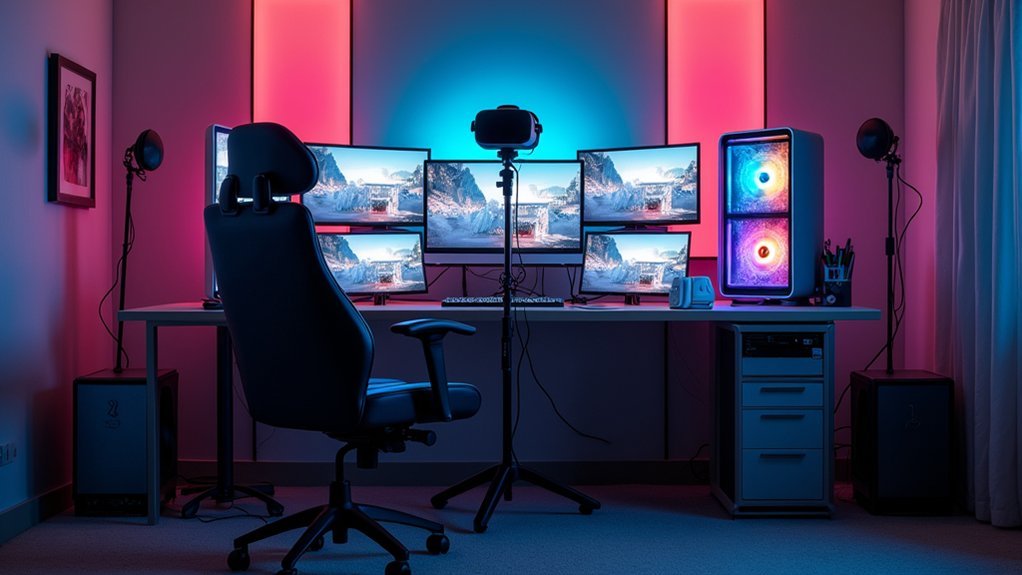
Since your streaming environment directly impacts viewer engagement and technical performance, creating the right setup requires careful attention to several key elements.
You’ll need proper lighting to prevent grainy images that diminish VR quality. Invest in high-quality audio equipment like omnidirectional microphones to capture immersive soundscapes that keep viewers engaged. Your Internet connection must be stable and fast—use a wired connection to minimize latency issues during live broadcasts.
- Optimize your physical space: Set up a green screen for seamless backgrounds and maintain a clutter-free area to avoid camera interference.
- Test technical components: Verify your internet speed, audio levels, and lighting conditions before going live.
- Create professional aesthetics: Ascertain clean backgrounds and proper camera positioning for maximum visual impact.
Configuring Your 360 Camera Settings
You’ll need to optimize your 360 camera’s technical settings to deliver high-quality VR content that keeps viewers engaged.
The most critical configurations involve setting the right resolution and frame rate for your streaming goals and audience expectations.
You’ll also want to configure proper stitching parameters and streaming protocols to guarantee seamless video delivery across different VR platforms.
Resolution and Frame Rate
When setting up your 360 camera for VR live streaming, resolution and frame rate become the foundation of your viewers’ immersive experience.
You’ll want to select at least 4K resolution for clear visuals, though 8K delivers superior detail. Standard 30 fps provides smooth playback, but higher frame rates like 60 fps enhance realism in fast-moving scenes.
Your bitrate must match your chosen settings – higher resolutions and frame rates demand increased bitrates to prevent buffering.
Make certain your stitching and encoding settings are optimized for real-time processing.
- Test different resolution and frame rate combinations before going live
- Verify your streaming platform supports your chosen specifications
- Calibrate settings based on your audience’s technical capabilities
Regular testing prevents quality issues during actual broadcasts.
Stitching and Protocol Settings
After establishing your resolution and frame rate, stitching and protocol configurations become the technical backbone that transforms multiple camera feeds into a unified 360-degree experience.
Your stitching settings determine how seamlessly these feeds blend together, so you’ll need to configure horizon leveling, stitch line adjustments, and color correction through your camera’s software or applications like Insta360’s 8K Live.
Ensure your camera supports essential live streaming protocols including RTMP, RTSP, or HLS for platform compatibility with YouTube and Facebook.
Configure your bitrate settings to match your internet bandwidth capabilities while maintaining quality. Fine-tune your encoding settings to achieve sub-100 millisecond latency for ideal viewer experience.
Test these configurations thoroughly before going live to prevent technical issues during broadcasts.
Selecting and Connecting to Streaming Platforms
Three major platforms dominate the 360 VR live streaming landscape: YouTube, Facebook Live, and Twitch. Each streaming platform offers distinct advantages for your VR live broadcast needs.
You’ll need to verify that your chosen streaming services support essential protocols like RTMP, RTSP, or HLS for ideal compatibility.
YouTube provides seamless integration with OBS Studio through your Stream Key, making it ideal for broadcasting video streams. Before going live, craft compelling titles and descriptions to boost discoverability on these streaming platforms.
Key setup considerations:
- Verify protocol compatibility (RTMP/RTSP/HLS) with your chosen platform
- Configure streaming software using your unique Stream Key for authentication
- Test connection stability and bandwidth requirements before broadcasting
Monitor viewer engagement throughout your stream to adapt content real-time and enhance future broadcasts across these streaming services.
Optimizing Network Performance and Bandwidth
Since 360 VR live streaming demands substantial bandwidth and rock-solid network stability, you’ll need to enhance your internet connection before broadcasting.
Choose a wired connection over Wi-Fi whenever possible, as this provides the most reliable streaming experience with minimal latency.
Enhancing network performance starts with monitoring your bandwidth usage regularly. Streaming requires at least 25 Mbps for smooth 4K content delivery.
Configure Quality of Service (QoS) settings on your router to prioritize your streaming traffic above other network activities.
Position your equipment close to the router and eliminate obstacles like walls or electronic devices that could interfere with signal strength.
Conduct periodic speed tests to verify your connection’s consistency and make necessary adjustments to maintain peak performance throughout your broadcast.
Testing Your Setup Before Going Live
Before launching your 360 VR live stream, you’ll want to run thorough tests that catch potential problems early and guarantee your audience receives the best possible experience. Your testing process should verify every component works seamlessly together.
Start by conducting a complete equipment check—ensure cameras, microphones, and VR headsets are fully charged and functional. Test your internet connection using Speedtest.net, targeting at least 25 Mbps for ideal streaming quality. Install all necessary software updates for your streaming platform and hardware to prevent compatibility issues.
- Perform a complete trial run of your live VR setup, checking audio levels and video resolution.
- Simulate the actual streaming environment with a small test audience for real-time feedback.
- Verify all integrated software configurations work properly together before going live.
Managing Stream Quality and Viewer Experience
Once your 360 VR stream goes live, you’ll need to actively monitor and adjust quality settings to deliver an exceptional viewer experience.
Maintain minimum internet speeds of 25 Mbps for 4K VR content and 50 Mbps for 8K content to support ideal resolution and frame rates. Use adaptive bitrate transcoding in streaming software like OBS Studio to accommodate viewers with varying internet speeds, preventing excessive buffering while maintaining stream quality.
Monitor viewer feedback and network conditions regularly, adjusting bitrate and resolution settings accordingly. Incorporate 3D audio and interactive elements to greatly enhance engagement and immersion in your VR content.
Always use a wired internet connection when possible, as it provides greater stability and lower latency than wireless connections, ensuring seamless streaming performance.
Troubleshooting Common 360 VR Streaming Issues
When technical issues arise during your 360 VR stream, quick identification and resolution become critical to maintaining viewer engagement and stream quality. Troubleshooting requires systematic checking of your network stability, camera settings, and audio configuration to resolve problems efficiently.
- Network connectivity issues: Position your camera close to the VR headset and use a high-quality router to achieve latency under 100 milliseconds, while regularly monitoring network conditions before going live.
- Video artifacts and stitching problems: Verify your camera’s calibration and guarantee stitching software functions properly, checking that streaming protocols like RTMP are correctly configured.
- Audio problems: Confirm omnidirectional microphones are positioned correctly and functioning well, as high-quality audio capture considerably impacts viewer engagement in immersive experiences.
Frequently Asked Questions
How to Setup VR Streaming?
Choose a quality VR camera like Insta360 Pro 2, connect it to a powerful PC with strong GPU, configure OBS Studio with your stream key, test audio/video quality, then promote your stream on social media.
What Do I Need for a Full VR Setup?
You’ll need a high-resolution VR headset like Pimax Crystal Light, powerful PC with strong GPU/CPU, quality microphone for audio, OBS Studio software, and optionally high-resolution cameras for reactions.
What Internet Speed Do I Need for VR Streaming?
You’ll need at least 25 Mbps for stable VR streaming, though 4K requires 50+ Mbps and 8K needs 100+ Mbps. Use wired ethernet and maintain under 50ms latency for peak performance.
How to Become a VR Streamer?
You’ll need a high-quality VR headset, powerful PC with strong GPU, and streaming software like OBS Studio. Create engaging content, configure your setup, and focus on interactive elements to enhance viewers’ experiences.


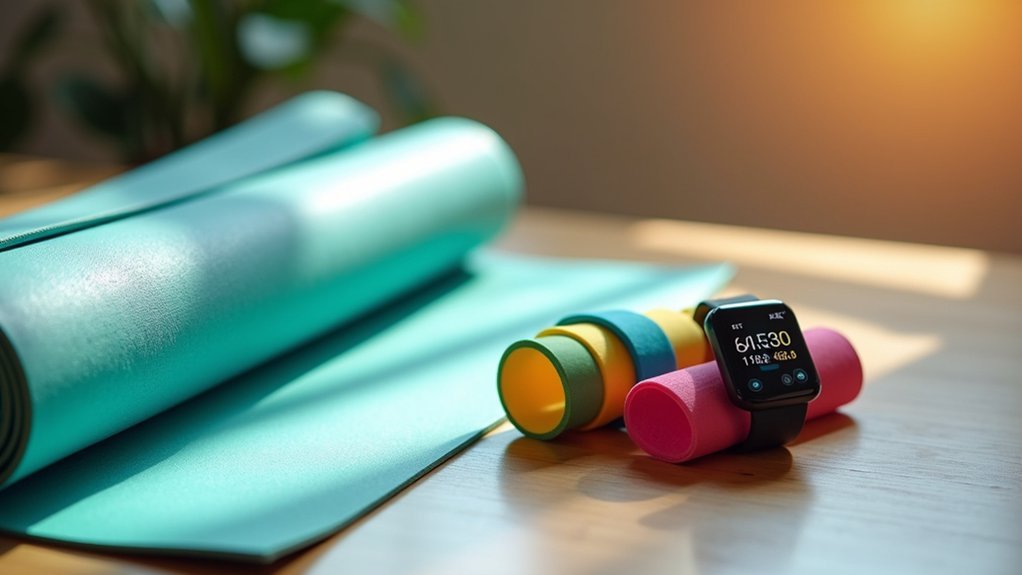
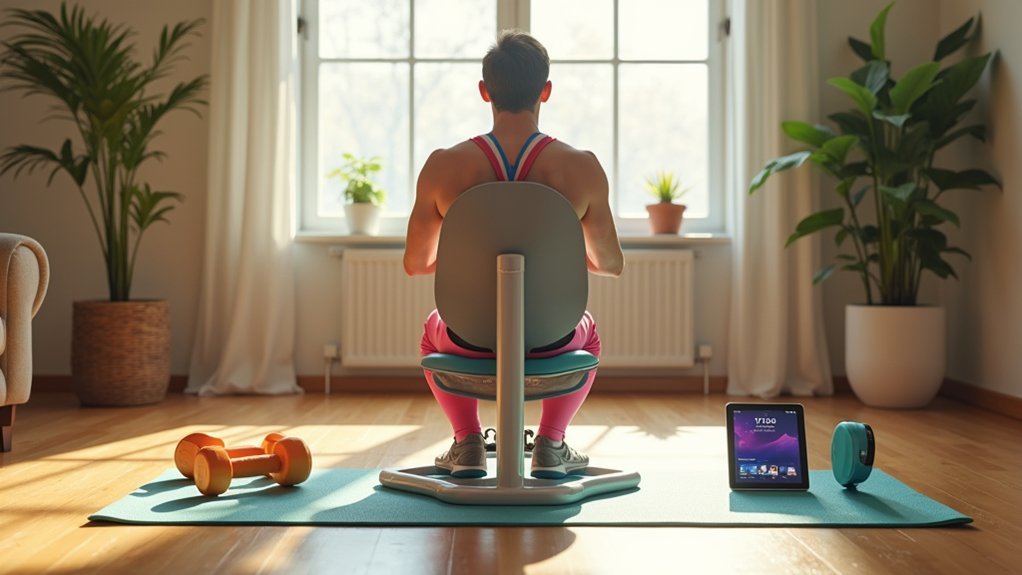

Leave a Reply